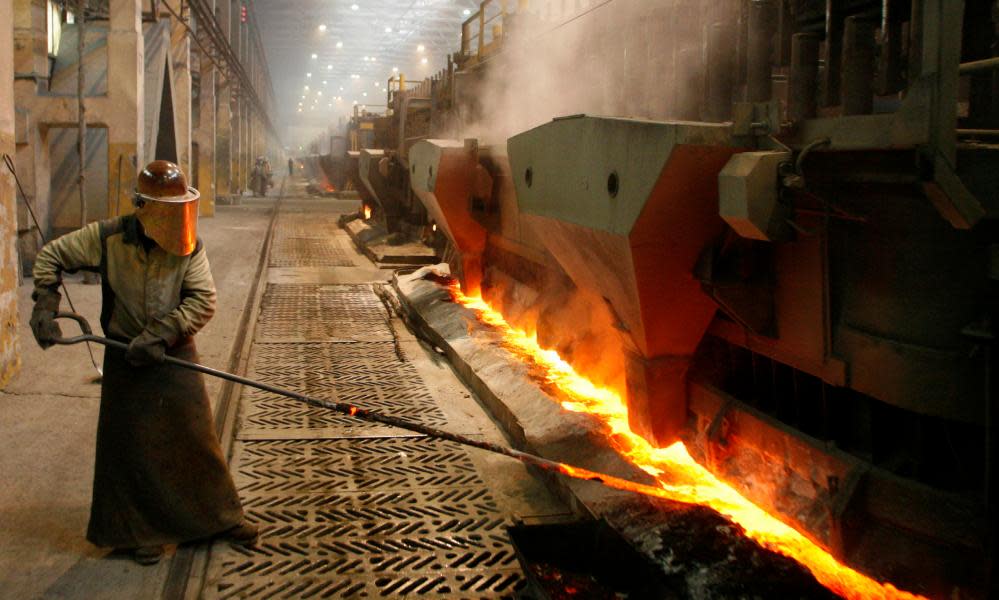Gas-fired power plants failed during NSW heatwave, report reveals

Gas-fired power plants failed during this month’s New South Wales heatwave, forcing authorities to urgently cut demand from the Tomago aluminium smelter to prevent outages.
The record-breaking heat put enormous strain on NSW’s electricity supply on Friday, 10 February, when demand peaked at 4.30pm at 14,181MW.
The state government urged the public to reduce energy use but a series of supply failures about 5pm forced the Australian Energy Market Operator to take urgent steps to avoid outages.
Aemo’s report on the day, released on Wednesday, suggests the network was struggling to deal with the pressure.
It found gas generation failed at EnergyAustralia’s Tallawarra power plant on the NSW south coast owing to faults with the turbines. The Colongra gas-fired plant, owned by Snowy Hydro, was unable to start because of low gas pressure in its supply lines.
Output was also reduced from two of AGL’s 500MW coal-fired power units at the Liddell power station.
The combined failures left about 2,000MW unavailable during the peak period of demand. A number of thermal generators also reduced their output, while solar and wind generation reduced by 300MW in line with forecasts for that time of the day.
“These factors, all coinciding at approximately 1700 hours, combined to overload the New South Wales interconnections with Queensland and Victoria, creating an insecure operating state,” Aemo’s report said.
The market regulator urgently requested that the Tomago aluminium smelter reduce its demand by 290MW for an hour to cope. It described that action as one of “last resort”.
The smelter’s three potlines were shut down for 75 minutes each and workers were forced to work in 80C heat in the smelter to save the plant’s equipment.
The report found that all actions and responses of facilities and services were adequate.
Fairfax Media also reported that Aemo had warned residents in western Victoria that they may need to suffer blackouts so that the transmission lines between the two states could continue to operate at full capacity.
The NSW situation has received far less attention than that of South Australia, where the federal government has repeatedly blamed intermittent renewables for blackouts.
But the Climate Council said Aemo’s report showed it was fossil-fuel plants that failed when NSW needed them most. A councillor, Andrew Stock, said he had calculated the loss of power from fossil-fuel plants on the day at about 3000MW. The report showed the unreliability of the state’s ageing coal and gas plants, he said.
“A lot has been made politically of how unreliable renewables are, yet when it came to the crunch on the 10th of February, renewables actually performed as expected – it was the fossil fuel plant that failed dismally,” Stock told Guardian Australia.
“It’s disappointing that the political debate is around one source of electricity versus another, when we’ve clearly got an issue with more intense weather that’s putting the systems under pressure.
“And it’s the very fossil-fuel plants … that exacerbated that problem, and they are exacerbating the long-term problems through climate change.”
The energy minister, Josh Frydenberg, said the situation in NSW was “significantly different” to the one in South Australia. He noted there had been no residential load shedding, and that Aemo had worked with AGL and the Tomago smelter to ensure stability.
“The energy issues and challenges faced in NSW on 10 February 2016 were significantly different in scale and scope to what has been experienced in SA with a series of blackouts,” Frydenberg said.
Stock said a distributed system was needed to reduce the risk of failure. He said the decreasing cost of renewables, their low-risk of construction and a surge in investments made clear they offered the way forward.
“If we have a more distributed energy system, with less of our eggs in one basket … the risk of a system-wide failure is less, because there’s a natural resilience in distributed systems,” he said.
“That’s an important point around renewables – and obviously they’re not doing anything to contribute to climate change either.”

 Yahoo News
Yahoo News 
